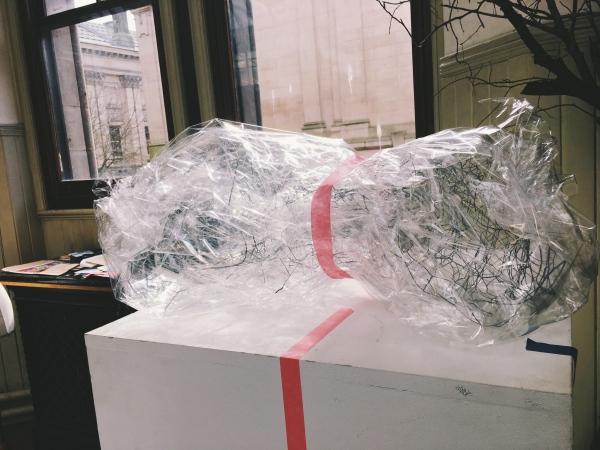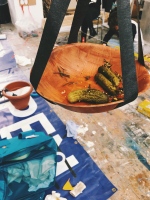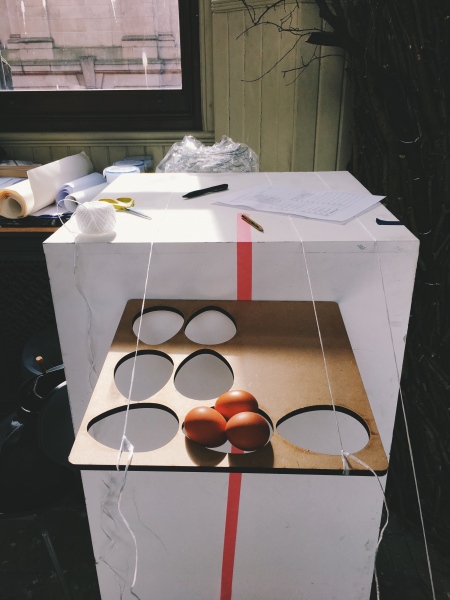Can Practices of Unlearning and Care be Better Situated Within the Institution?
Educational institutions are seemingly protected spaces, and ones which exist on the edges of defnitions of the public and the private. It is within these protected spaces that students should have adequate room and safety to grow academically. So, when care for students is not observed during problematic lectures what kind of action is appropriate? Letter writing opens up the possibility of calm, measured dialogue, and rather than acting within a culture of simply ‘calling out’ problematic behaviours it can sit comfortably within a culture of ‘calling in’, which engages people with unlearning taken-for-granted ‘truths’ in light of understanding the voices of marginalised people and communities.
This document begins with a letter written to a visiting lecturer at the Birmingham School of Art in 2019. It was written as a means of practice based research, or (letter) writing as method, in response to a problematic lecture delivered at the school. While the original letter contains details identifying dates and specifc people, I have chosen to omit this information as I feel it wouldn’t be an appropriate in light of other research undertaken surrounding the themes of unlearning and radical pedagogy. The purpose of the letter is to explore how we can implement care within our questioning of typically taken-for-granted ‘truths’ surrounding our understandings of knowledge. It is not to publically call out the lecturer in question, but to highlight a new approach to facing problematic behaviours within the institution. Sometimes problematic behaviours are born more from unconscious-bias and misunderstood positions of privilege rather than deliberate maliciousness, and unlearning that understanding has been key to the development of this research methodology.
(LETTER) WRITING AS METHOD
LETTER 03:
APRIL 18 T H, 2019
Dear XXXXXXX,
On XXXXXXXX, you visited the Birmingham School of Art to deliver a lecture titled ‘XXXXXXXXXXXXX’. A lecture filled with showmanship, exciting famous names, interesting unfamiliar ones and a very evident passion for the work and research that you undertake in order to deliver artist interviews. Unfortunately, there were a few points during the lecture where some of us felt uncomfortable and disappointed, and those moments will be addressed in this letter.
It’s taken a bit of time to properly sit down and write this letter, and before we explain why we felt the need to do so we would like to establish that the purpose of this letter isn’t to simply criticise, but to be constructive, and share understandings in a caring way. We have begun a process of understanding new ways of addressing these kinds of issues we face as we navigate academia. We are very keen to learn, but as we understand it at the moment, there are aspects of education which require a process of unlearning in order to expand our knowledge and understandings. Standing up and making a complaint during such a formal discussion in a lecture theatre is intense, but now we understand the importance of using our voice. The end of the lecture for questioning would have been a helpful time to raise these issues, and we appreciate it may have been a missed opportunity to address our concerns, but hopefully this letter will make up for that and make way for new dialogue.
Firstly, while it was interesting attending a lecture delivered by someone who has had so much contact with some huge names within the art world, it felt at times that you had chosen to forgo sharing your process of building a selection of questions for this impressive list of names in favour of bragging about having had the opportunity to interact with such huge names within the contemporary art world. It felt, at times, like a name-dropping-fest. We noticed that you would ask us if we had heard of particular artists, and when met with silence you would laugh to yourself. This action, while probably meant without any kind of malice, lost a lot of our patience. You frequently advised us to make sure we understand our audience, and the people we are interviewing, so with this in mind it didn’t make sense for a lecturer to laugh at our lack of knowledge while we are in an institution specifically to learn about the subjects being discussed. Often there were names we recognised, however at one point when a student raised his hand to indicate he was aware of a collective you mentioned, Slavs and Tatars, you asked how he knew about the artist collective and then didn’t engage any further with that student once he had proved his knowledge. After this a lot of us felt that if we raised our hands at any point that we would be grilled on the origins of our knowledge too. You were delivering a lecture to an incredible diverse collection of courses, and students, some of us don’t have conventional backgrounds in education, some of us may have spent a large amount of time away from the art world before beginning our MA’s. Laughing in response to students not knowing about something/someone doesn’t fill them with the confidence to engage with you.
During your explanation of the impact of Yinko Shonibare’s radical act of decolonisation of the gallery/museum you touched on an image of Shonibare on the night of your interview with him in Brooklyn, the same night of Michael Jackson’s death. You very briefly described the context of the image and explained Shonibare’s performative entrance to the event, where you decided that the most appropriate word to describe the two other performers on Shonibare’s arms were ‘transvestites’. We are unsure if you were aware of our reactions to the use this word, but hearing it left us with our jaws on the foor. ‘Transvestite’ is a very antiquated term, and one which is considered derogatory within the LGBTQI community.
Language is a powerful thing, and we have a duty to marginalised communities to listen to their voices, and reflect critically on our own use of language where necessary. While it may not have been considered outdated in 2009 when the event took place, it definitely is now. If you were unaware of this, then here are some more appropriate terms:
- Transgender: a transgender person is one whose gender identity does not correspond to the sex they were assigned at birth. This term would be considered appropriate if the two people who joined Shonibare for his entrance to the event identify as transgender.
- Cross dresser: those who engage in cross dressing do not typically wish to change their gender as a transgender person would, however they do wish to express a different gender through their clothing. Cross dressers are not considered to be the same as drag queens, as they don’t do it for entertainment.
If the people either side of Shonibare do not identify as either of the above then they are simply performers, enacting the role of someone of a different gender for specific events, but not as a lifestyle choice.
While we’re on the subject of gender, you talked about a lot of artists during your lecture, but one which didn’t sit right with a lot of us was when you talked about your experience with interviewing Zarina Bhimji. You told us that on a personal level she was “sweetness and light” and then went on to continually refer to her as a “girl”. You explained she is renowned for being “difficult” as she rarely gives interviews. If we go back to what was mentioned earlier about the power of language, it’s difficult to hear these two contrasting descriptions of an artist’s personal life and public life compared, especially when that artist is a woman. Better words could be used, starting with correctly saying she is a woman, not a girl, and identifying that she is private, rather than difficult. Women are tired of being labelled as “difficult” for taking control of their image, their private information and what controlling exactly what people know about them - these are traits which are praised in men. Unlearning this idea that if a woman has agency over her own public facing life she is difficult is necessary if we are to move closer to equality.
You also discussed your interviews with artist Ai Weiwei, and illustrated your account of a conversation with him using the image taken by Nilüfer Demir of Alan Kurdi, the Syrian child who was found dead on the beach. The image was used within the context of Ai Weiwei’s work, where he posed as the drowned Syrian refugee child. What followed was a very interesting discussion on the issues surrounding the work, and your subsequent conversations with Ai Weiwei, which gave a clear insight into why he made the work. Our issue with this section of the lecture begins and ends at the use of the image of Alan Kurdi without any warning prior to the lecture beginning. Some people within your audience had made a very critical decision not to look at that image as it was circulated in the media at the time, and a few had successfully managed to avoid confronting it until now, and the use of it within the lecture took that decision away from them.
In addition to this point, you showed us some interesting work by Lawrence Abu Hamdan, showing us about 30 seconds of footage which was ultimately used in a court of law to prove the use of live ammunition which killed two Palestinian children. There was no warning that we would be hearing gunshots, and several audience members found the sudden noise of the audio clip to be distressing, given its loud volume and the fact that it was clearly gunshots. With this in mind, we felt the key thing that was missing from your lecture, that could have solved a large number of issues around this kind of content, was some kind of pre-warning that the lecture would contain distressing content. Or perhaps a warning that an upcoming slide would be distressing (in the cases of both the slides for Alan Kurdi and the Lawrence Abu Hamdan audio clip). This would have given audience participants the choice to remain in the audience during specific parts, and would have afforded many audience members the opportunity to at least prepare themselves so they could continue to participate.
Throughout the lecture you pointed out that someone was recording with a Dictaphone. The student who had decided to use a Dictaphone suffers with dyslexia, with a particular issue relating to memory and retaining information. You repeatedly pointed out the Dictaphone, which in itself is fine, but then chose to point out the student who had placed it on the lecture podium, who wasn’t even the student who owned the Dictaphone. The student who the Dictaphone did belong to didn’t want to be ‘outed’ to a lecture theatre full of strangers that they had a learning difficulty, yet you asked again who the equipment belonged to. You then went on to make a point about recording devices and the ethics of using them during interview situations, which was interesting and useful information, but pushing to find out who it belonged to didn’t feel appropriate in that situation.
It’s safe to say that if you deliver a lecture within an institution it’s highly likely you will be in the presence of students trying to navigate their studies with extra support. Attempts to single them out can act to undo the confidence they built up within themselves to engage with academia. Being part of a university which offers support is a wonderful privilege, especially when it’s kept discreet so that student can integrate themselves within the faculty and feel on a level field with those who don’t have additional needs. In addition to this point, as mentioned already, your lecture was complimented with quite an in-depth presentation, which happens to also be the only presentation that isn’t available to us to view on Moodle. Lectures can be incredibly overwhelming spaces for those who need extra support, so providing presentations on Moodle for those who struggle with large amounts of information can be a valuable tool for their work, providing them with opportunity to feel far less pressure during the lecture itself, which in turn helps distil all of the information presented. We would really like for your presentation to be uploaded to Moodle, as you provided us with a rich array of helpful information.
We came to this institution to learn, to share knowledge and to develop our practices, and part of the privilege of education is being able to see things from a newer perspective, in relation to all of our collective knowledges and unlearn embedded problematic knowledge. This institution has become a site not just for learning through the programme we pay for, but also for an embodied learning experience we can all share with each other alongside the formal curriculum. One of the main opportunities this presents us with is the ability to pool our collective thoughts together and better understand what we are trying to understand, and this works too with frustrations, anxieties and fears. Through this process of sharing our feelings on your lecture, we have been able to self-organise and produce this letter, which we really do hope can be used as a learning tool.
We would like to invite you to spend some time with us discussing your feelings on the issues we have raised, as we wish to maintain an open dialogue. Of course, you are welcome to respond in any way you wish, we only ask that you direct any letters/emails to us with care in mind.
MA Students, Birmingham School of Art
We are living in a time where there is a crisis of care, where precarity and emotional labour are rapidly normalised within our educational institutions, those of which can be known to be obstructive to the students who attend them and educators who work within them. Frequent conversations amongst students centre around trying to understand what they are actually paying for and fguring out who is actually being exploited within the hierarchies of educational institutions. In addition to these anxieties, a general lack of care for students is felt amongst cohorts, not so much of a malicious lack of care, but more a lack of room to care for and about students within the current pedagogical frameworks. Why is there an overwhelming disparity in the diferent ways the institution embodies care? Educators who naturally want to be caring will naturally care, however institutions do not leave very much room for that care to occur within the job – care becomes an added bonus.
This embodiment of emotional labour highlights the current crisis with care and precarity in our institutions at the moment. This document is an enactment of a kind of institutional critique which focusses on unlearning as a means of breaking down ‘traditional’ pedagogical methodologies. These methodologies will help to answer questions mentioned already, as well as: why are we not interrogating our knowledge more? How can we be more critical of our understandings and keep care at the centre? I am keen to express that when I talk about care, I am not only discussing that of a person’s wellbeing in terms how the stresses of education can impact mental health, I am also referring to the care required for those who have experiences with the myriad of intersections between imperialistic structures, such as sexism, racism, ableism, ageism, classism, etc.
When we think about embodied learning and how care factors into our understandings of education there’s a clear resistance between the two ideas that manifests itself in an array of institutions which neglect to embody care itself directly within our learning. Instead, care is kept separate – at arms-length from knowledge. At times, it feels like care is seen as an exercise only practiced within moments of emotional and reproductive labour, which in itself is already heavily feminised and sits behind a cavernous discrepancy in value when compared with other forms of knowledge production and labour. Emotional labour often goes unacknowledged and sits outside of the realm of a person’s specific job description.
A recent lecture at Birmingham School of Art delivered by Marsha Bradfield (2019) outlined a whole host of issues particular to precarious work within institutions. Here one observation stuck with me - the amount paid to a secondary PhD supervisor for 10 hours of contact time with a PhD student per annum is £250, and yet the cost of the course is excessively higher. Who has been exploited here? Bradfield outlined her own feelings on this explaining she always offers far more time than she is paid to give because she cares deeply for her students and hopes they will do well, however this then falls into the realm of unpaid, emotional labour. This kind of labour is rarely acknowledged financially and is typically only enacted by womxn. With this in mind, how can we engage with enactments of unlearning within institutional dynamics while keeping care at the forefront? And how can this be done in a way that subverts the typical frameworks specific to those of an ‘expected’ role of womxn?
While institutions provide crucial access to resources otherwise less accessible outside of education (Yardley, 1985), the rigidity of the formality and organisation of the institution can restrict that access (Percy, 2014). A kind of pastoral care then becomes a tool employed by those who give their time in a way that breaks away from the language of the institution. Pastoral tutorials are performed moments used to unpick the frustrations and problems present in a student’s life which could be having an impact on their studies, and works in a way that eliminates the notion that as students of the institution, at the very base level we are customers, paying to be a part of that institution (Iarovici, 2015). It is clear that educators do care, however the very nature of the formal rigidity of the performative aspect of these timetabled moments of care undermines this notion.
Despite this observation, to be anti-institutional wouldn’t be productive either. Instead, we are faced with a potential moment in time where a tangible shift is being felt as we pool our shared understandings, individual knowledge and forefront care at the exchange of collective resources. Unlearning seemingly ‘established’ ideas in order to make way for new and richer understandings of our knowledge is a vital part of this process, and one which will feature heavily within this document. Radical practices of unlearning will help make way for new ways of thinking which will in turn reveal new ways of understanding our knowledge (Allan, L. and Choi, B. 2018).
Capitalism demands that we be emotional, but also that we manage it; psychological vulnerability often isn’t tolerated (Illouz, 2007). If we take this idea into consideration in relation to emotional labour within institutions we can see a highly feminised performativity at play, of trimmed edges and folded down seams. It is well established that within the performativity of femininity there is a direct association with ideas of the domestic and how that space is gendered (Spain, 1993). With this in mind, in order to answer the question of why womxn appear to be at the forefront of enactments of care within institutions, and how that in turn relates to notions of femininity and care, we must first understand the typically accepted ideologies of care and how that relates to womxn.
Gillian Dalley (1988) first theorised that while exploring the many facets of care is a daunting task, one un-tangleable concept is that of motherhood and its relation to care, that the embodiment of ‘caring for’ and ‘caring about’ are so tightly intertwined any division of those concepts would go against an integral part of womxn’s ‘nature’. Any womxn’s separation of those two tasks, such as offloading the ‘caring of’ another person or giving up any form of agency over someone being ‘cared for’, situates her as ‘deviant’.
Hilary Graham (1983) argues that this is less to do with nature than with socially defined roles and illogically drawn boundaries. Our first step in understanding how specific structures within educational institutions can be broken down in order to make room for care is to revaluate these typically accepted notions of care and ideas of community care. We could accept the idea of deviant womxn engaging with breaking down institutional structures or we could work towards normalising the possibility of detangled notions of care, those of which currently situate themselves quite uncomfortably and precariously within patriarchal power structures. In terms of our understanding of care, we must persistently expose, criticise and unlearn its gendered nature and continue to make it visible in both domestic and public spaces.
Bibliography
Aikens, N., Lange, T., Seijdel, J. and Thije, S. (2016). What’s the use?. Amsterdam: Valiz.
Alberro, A. and Stimson, B. (2009). Institutional critique. Cambridge, Mass.: MIT Press.
Allan, L. and Choi, B. (2018). Unlearning exercises. Utrecht: Casco Art Institute: working for the commons.
Allen, F. (2011). Education. London: Whitechapel Gallery
Belenky, M. (1997). Women’s ways of knowing. New York, NY: Basic Books.
Billing, J., Lind, M. and Nilsson, L. (2007). Taking the matter into common hands. London: Black Dog Publishing.
Bishop, C. (2006). Participation. London: Whitechapel.
Bradfield, M. (2019). Artist Talk. ART7902 Research in Practice. ADM, Birmingham City University, 2nd April.
Butler, J. and Scott, J. (1992). Feminists theorize the political. New York: Routledge.
Choi, B. and Tanaka, M. (2014). Grand Domestic Revolution. Amsterdam: Valiz. Dalley, G. (1988). Ideologies of caring. London: Macmillan.
Farinati, L. and Firth, C. (2017). The force of listening. Berlin: Errant bodies press.
Gerritzen, M., Kampman, M. and Lovink, G. (2011). I read where I am. Amsterdam: Valiz.
Gielen, P. (2013). Institutional attitudes. Amsterdam: Valiz.
Gielen, P. and Van Tomme, N. (2014). Aesthetic justice. Arts in a moral and political discourse. Amsterdam: Valiz.
Graham, H. (1983) Caring: a labour of love. In Finch, J. and Groves, D. (1983). A Labour of love. London: Routledge & Kegan Paul.
Graham, H. (1991) The Concept of Caring in Feminist Research: The Case of Domestic Service. Sociology, 25(1), pp. 61–78.
Held, V. (2007). The ethics of care. New York: Oxford University Press.
Helguera, P. (2011). Education for socially engaged art. New York: Jorge Pinto Books.
Heusden, B. and Gielen, P. (2015). Arts education beyond art. Amsterdam: Valiz.
Hirschman, J. (2002). Art on the line. Willimantic, CT: Curbstone Press.
Hooks, B. (2003). Teaching community. New York: Routledge.
Garzón Sabogal, A., Khoury, A., Olascoaga, S., Segeote., L. and van der Heide, Y. (2019). Unlearning Movement with Arts Collaboratory in conversation with Another Roadmap for Arts Education. [online] Utrecht: Casco Art Institute Working for the Commons. Available at: https://soundcloud.com/user-30393718/session-4-unlearning-movement [Accessed 20 Apr. 2019].
Iarovici, D. (2015). Don’t treat students as customers when it comes to mental health. The Guardian. [online] Available at: https://www.theguardian.com/higher-educationnetwork/2015/apr/28/dont-treat-students-as-customers-when-it-comes-to-mentalhealth [Accessed 5 Apr. 2019].
Illouz, E. (2007). Cold Intimacies: The Making of Emotional Capitalism. Cambridge: Polity Press. McLarin, K. (2019). Can black women and white women be true friends? The Washington Post. [online] Available at: https://www.washingtonpost.com/nation/2019/03/29/canblack-women-white-women-be-true-friends/?utm_term=.8e3f172ef102 [Accessed 5 Apr. 2019].
Macleod, K. and Davey, N. (2010). Thinking through art. London: Routledge. McGee Banks, C. and Banks, J. (1995). Equity pedagogy: An essential component of multicultural education. Theory Into Practice, 34(3), pp.152-158.
Munar, AM, Villeseche, F & Wiedemann, CD. (2016) Reference List About Implicit and Unconscious Bias. Copenhagen Business School, CBS, Frederiksberg.
Munder, H. (2007). It’s time for action (there’s no option). Zürich: JRP Ringier. Papapetros, S. and Rose, J. (2014). Retracing the expanded field. Massachusetts: Mit Press.
Percy, A. (2014). Student mental health: the situation is more nuanced than it seems. The Guardian. [online] Available at: https://www.theguardian.com/higher-education-network/ blog/2014/oct/16/student-mental-health-situation-is-nuanced [Accessed 6 Apr. 2019].
Puig de la Bellacasa, M. (2017). Matters of care. Minneapolis, Minnesota: University Of Minnesota Press.
Spain, D. (1993). Gendered Spaces and Women’s Status. Sociological Theory, 11(2), pp.137- 151.
Tronto, J. (1994). Moral boundaries: a political argument for an ethic of care. New York: Routledge.
Van der Heide, Y., Choi, B., Jeschke, L. and Vishmidt, M. (2017). 365 days of invisible work. Leipzig: Spector Books.
Warren, C. (2016). Black Ontology and the Love of Blackness: Black Care. liquid blackness, 3(6).
Welchman, J. (2006). Institutional critique and after. Zurich: JRP/Ringier.
Wesseling, J. (2011). See it again, say it again. Amsterdam: Valiz.
Yardley, J. (1985). Higher Education: A Privilege, Not a Right. [online] Washington Post. Available at: https://www.washingtonpost.com/archive/lifestyle/1985/02/18/higher-education-aprivilege-not-a-right/f9486285-61f5-405d-be22-7c8969f87b80/?noredirect=on&utm_ term=.84185a1f6e53 [Accessed 2 Apr. 2019].







